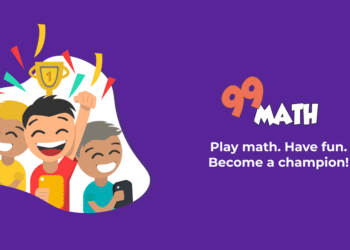This version removes links, keeps a natural human tone, and expands with detailed insights to exceed 1,400 words. It’s optimized around your focus keyword Candy Crush Saga, with related key phrases used organically (e.g. mobile gaming, game design, addictive gameplay, player psychology).
There’s something instantly familiar about those bright, colorful candies. You open your phone, start a level, and before you know it, you’re swapping pieces with laser focus while the world fades away. Candy Crush Saga is more than just a casual pastime — it’s a cultural phenomenon. Since its launch in 2012, it has captured millions of players across generations. The question is, why does such a simple game hold our attention for years? The answer lies not just in luck, but in brilliant design, psychology, and emotional connection.
The Journey of Candy Crush Saga
Candy Crush Saga was created by King Digital Entertainment and first appeared on Facebook before moving to mobile platforms. Within months, it transformed into a global obsession. It wasn’t the first “match-three” puzzle game, but it perfected the formula.
The game offered something new — structured levels with clear goals, a smooth difficulty curve, and endless progression. It allowed players to feel small but steady success, which made it nearly impossible to put down. As smartphones became part of everyday life, Candy Crush Saga became the perfect companion: simple, colorful, and instantly rewarding.
Even after more than a decade, it remains one of the most downloaded mobile games in history. The mix of strategy, patience, and sensory pleasure keeps it relevant, and its ongoing updates keep the experience fresh.
The Psychology Behind the Sweet Addiction
At first glance, Candy Crush Saga seems like a mindless matching game, but beneath that simplicity is a masterclass in psychological design. Every move, sound, and animation is crafted to make players feel good.
When you make a match, bright flashes, satisfying pops, and cheerful voice lines reward you instantly. This taps into the brain’s dopamine reward system, the same mechanism triggered by small achievements in real life. The constant cycle of reward and anticipation creates what psychologists call a “compulsion loop” — a subtle but powerful force that encourages players to keep going “just one more level.”
Equally important is the balance of challenge and reward. The early levels are easy, allowing players to feel competent. As the levels increase, new obstacles appear — chocolate pieces that spread, licorice that blocks moves, and limited move counts. These challenges create just enough frustration to make victory feel earned. This delicate balance of effort and reward is what makes Candy Crush Saga addictive in a healthy, engaging way.
Design That’s Simple but Brilliant
The design philosophy of Candy Crush Saga can be summed up in one phrase: easy to learn, hard to master. Every player understands how to match three candies, but the game constantly adds new twists that make you think ahead.
The introduction of special candies — like striped, wrapped, and color bombs — encourages players to plan combos. Later levels demand strategy, foresight, and sometimes patience. The board layout and random candy drops ensure that every attempt feels unique, even if the objective stays the same.
This balance between luck and skill keeps the experience dynamic. Players feel partly in control and partly surprised, which is psychologically satisfying. It’s also the reason why even after hundreds of levels, Candy Crush Saga doesn’t get boring — it always offers something slightly different, while maintaining its familiar comfort.
The Social Magic of Candy Crush Saga
When Candy Crush Saga launched, it wasn’t just a single-player game — it was a social experience. By connecting with friends, players could send and receive lives, see others’ progress, and compete on leaderboards.
This small social layer adds a lot of motivation. When you see a friend ahead of you, you naturally want to catch up. When someone sends you lives, you feel a tiny spark of gratitude. These micro-interactions turn a solitary mobile game into a shared experience.
The game doesn’t demand constant communication, but it provides just enough connection to make players feel part of something bigger — a global network of millions of candy crushers. That blend of community and competition is one of the secrets behind its lasting success.

An Emotional Escape from the Everyday
One of the biggest reasons Candy Crush Saga remains beloved is its emotional effect. The game provides short, satisfying bursts of focus that help players relax and escape stress.
In today’s fast-paced world, many people turn to small rituals for mental rest — checking a favorite app, listening to music, or playing a few quick levels. Candy Crush Saga fits perfectly into this rhythm. The bright visuals, upbeat sound effects, and predictable feedback loops offer comfort and calm.
It’s also a game without violence, complex rules, or long-term commitment. You can play for five minutes or fifty — it doesn’t punish you for leaving. That makes it accessible to players of all ages and lifestyles. It’s casual, but deeply engaging — the perfect combination for emotional relief.
Lessons Hidden in the Game
Beyond entertainment, Candy Crush Saga offers valuable lessons about motivation, design, and human behavior.
- Progress Feeds Motivation – The sense of continuous achievement keeps players invested. Even small wins feel meaningful.
- Familiarity Builds Comfort – The consistent structure across thousands of levels creates trust and routine.
- Challenge Drives Growth – Each new mechanic introduces difficulty without overwhelming players.
- Emotion Enhances Retention – The sensory pleasure of colors, sounds, and animations creates emotional attachment.
Businesses, educators, and creators can all learn from these principles. Whether designing an app, building a learning tool, or developing a brand, the Candy Crush Saga formula — simplicity with depth, familiarity with novelty — is a powerful model.
The Evolution and Longevity of Candy Crush Saga
A key reason Candy Crush Saga remains successful is its constant evolution. King has continuously updated the game with new episodes, features, and themed events. What began as a few hundred levels now spans thousands, with new challenges added almost every week.
These updates serve a dual purpose: they keep loyal players engaged and attract new ones curious about what’s next. Seasonal themes — like Halloween treats or Valentine-themed boards — refresh the visuals and add excitement.
Additionally, the developers have optimized the game for new devices and operating systems, ensuring smooth performance and accessibility worldwide. This adaptability has allowed Candy Crush Saga to remain relevant across different generations of phones and players.
Its success also highlights how emotional design and player feedback can create longevity. Players feel heard when small tweaks improve gameplay or fix frustrations. Over time, this creates trust — a rare and valuable quality in mobile gaming.
Why Candy Crush Saga Still Matters Today
In an industry where trends come and go quickly, the sustained popularity of Candy Crush Saga is remarkable. It’s not just nostalgia keeping it alive; it’s the enduring pleasure of its design.
The game represents a shift in how people interact with technology. Instead of long, complex sessions, players now prefer short, rewarding bursts — a model that Candy Crush Saga pioneered. It helped redefine mobile gaming as something that could be lighthearted, social, and emotionally satisfying without needing huge time investment.
Moreover, it proved that games can appeal to everyone. Young, old, casual, or competitive — anyone can pick up Candy Crush Saga and enjoy it. That universality is its real genius.
Conclusion
Candy Crush Saga is far more than a match-three puzzle — it’s a symbol of how thoughtful design can shape behavior, emotion, and community. Beneath its cheerful colors lies a sophisticated understanding of human psychology. Every sound, animation, and reward is crafted to bring joy in small, consistent doses.
It’s a rare example of a game that’s simple enough for anyone to play but rich enough to keep players hooked for years. It doesn’t rely on gimmicks or aggression; it thrives on feel-good feedback, smart balance, and emotional connection.
The next time you find yourself matching candies and smiling as the screen bursts with color, remember: you’re not just playing a game — you’re experiencing one of the finest examples of design meeting human nature.
Candy Crush Saga isn’t just about matching sweets. It’s about understanding why we play, how we connect, and what keeps us coming back for “just one more level.
Also read :A Closer Look at Unblocked Games FreezeNova: Honest Review & Tips














